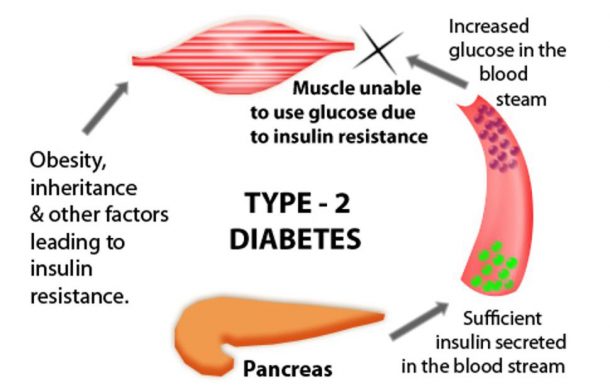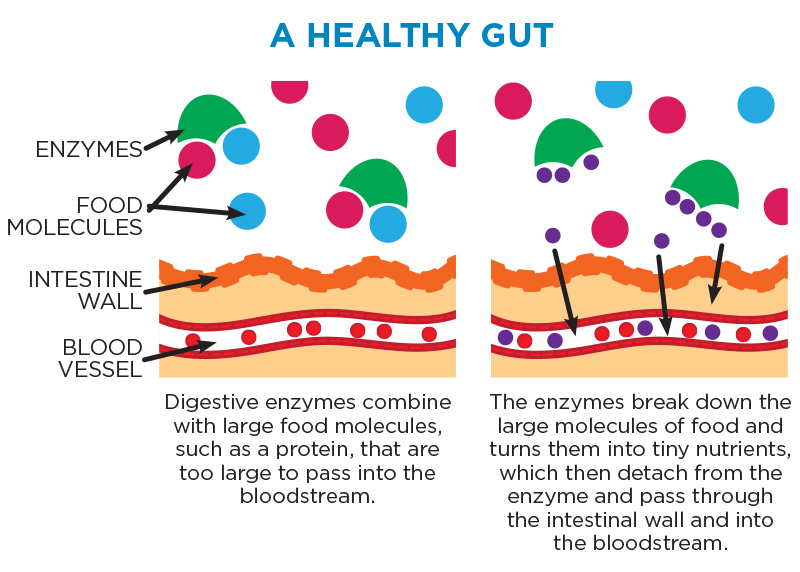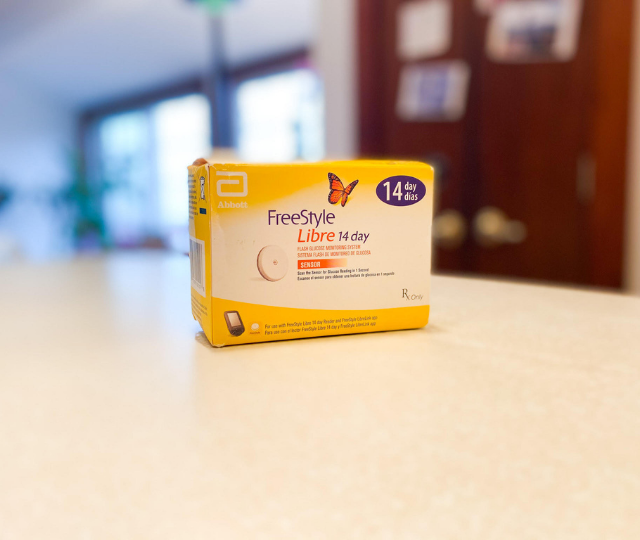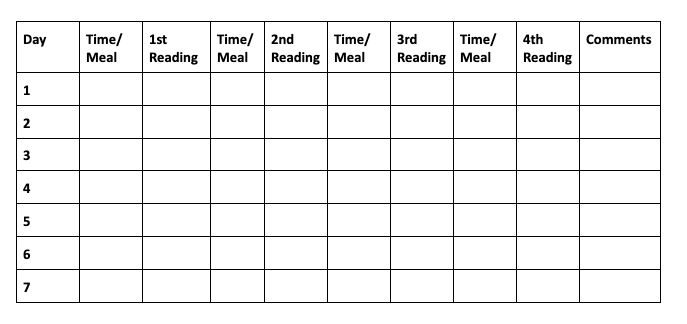High blood sugar, also known as hyperglycemia, occurs when the sugar molecules(glucose) you consume from food, rise in your bloodstream and have nowhere to go.
In other words, the molecules are free floating and are not sent to their proper location in the body for storage.
If you are someone who has high blood sugar, it is critically important to lower your blood sugar levels as chronically high blood sugar levels are a risk factor for diabetes.
There are many factors which contribute to high blood sugar and it is important to understand them if you want to devise a strategy to lower your blood sugar levels and avoid the long term consequences of high blood sugar.
What is Considered High Blood Sugar?
There are two types of hyperglycemia and they are defined as followed:
Fasting Hyperglycemia: This is blood sugar that is higher than 130 mg/dL after not eating or drinking for 8 hours.
After Meal Hyperglycemia: This is blood sugar that is higher than 180 mg/dL two hours after you eat.
Unless you get your glucose tested at a doctors office or have a glucose monitoring device, you unlikely know where exactly your blood glucose levels are at any given moment in time.
However, there are many subjective symptoms of high blood sugar that are indicating signs.
These include:
• Excessive thirst
• Tiredness (especially after a meal)
• Blurred Vision
• Fatigue
• Trouble Concentrating
• Headaches
Furthermore, what you eat on a daily basis can give you clues as to whether or not you will experience high blood sugar.
Later in this article, i’ll teach you which foods cause high blood sugar and what you can eat to lower your blood sugar levels.
The End Result of Chronically High Blood Sugar – Diabetes

As your doctor may have warned you, high blood sugar leads to diabetes which leads to a cycle of chronically high or low blood sugar and ultimately a depressed immune system and infections.
In other words, it will mess up your body’s mechanisms to dispose of glucose, leading to many ill health consequences.
Believe me, you don’t want your high blood sugar to get to this point.
That’s why it is critically important to take steps now to lower your blood sugar levels.
Glucose and Diabetes

Let’s say you eat a meal.
Your body begins breaking down all of the nutrients in that meal in the stomach and intestines.
The intestines process the food and release particles into the bloodstream. One of the substances, glucose begins to rise in the bloodstream.
Eventually, your blood becomes saturated with glucose and your body needs somewhere to put it.
Thankfully, your Pancreas makes a hormone called Insulin.
Insulin’s job is to take all that glucose from the blood and bring it to the liver and muscles for storage.
When you have diabetes, the cells in your body no longer recognize insulin because your body was bombarded with high levels of glucose for too long.
When people have diabetes, they will often take drugs like metformin because it helps their cells recognize insulin so that they open up and let the sugar in for storage in the right places.
Consequences of High Blood Sugar and Why You Should Lower Your Blood Sugar Levels
As mentioned, diabetes can cause infections.
This is because high blood sugar weakens your immune system and your body cannot fight off infections like it used to.
Once the infection sets in, it becomes harder to control than normal because your body is compromised.
Eventually, it could lead to amputation if the infection goes on long enough!
So what is the solution?
Well first, it’s to recognize that type two diabetes can be fully reversible in its early stages with proper dieting and lifestyle changes.
Foods That Raise Blood Sugar

Carbohydrates!
But wait, not all carbs are created equally.
Which ones raise blood sugar the most?
Simple carbohydrates – sucrose being the worst.
Sucrose comes from sugary foods, the sweet treats that seem impossible to resist.
Just read the label of any food package and see if it has sugar, cane sugar, or high fructose corn syrup.
You will be surprised how many foods have added sugar!
Sucrose raises blood sugar fast and the consequence is high blood sugar within minutes after consumption.
Other simple carbohydrates such as those from refined grains are also culprits for raising blood sugar levels.
These are found in white bread, white rice, and crackers.
Basically, any white flour product and grain.
You would also be amazed to learn how many foods products you consume on a daily basis have these added refined carbohydrates.
Complex carbohydrates – those found in whole grains such as oats, whole wheat, brown rice, and quinoa also raise blood glucose but to a lesser extent.
Because of their high fiber content, they slow the rate at which blood sugar rises, which is beneficial.
Ultimately, choosing whole grain products will be better than choosing simple carbohydrates when it comes to controlling your blood sugar levels.
Foods That Lower Blood Sugar

The two best macronutrients to keep blood sugar levels from soaring are proteins and fats.
These do not raise your blood sugar nearly to the same level as carbohydrates do and thus they are a preferred fuel source when you have chronically high blood sugar levels.
Seek out sources of animal products that do not have added sugar or added carbohydrates. You can find out by reading the nutrition labels on the back of the package!
An added benefit of fats specifically is that much like fiber, they also slow the rate at which blood sugar levels rise.
Therefore, if you are consuming a meal that has carbohydrates, it is a good idea to pair that food with healthy fats!
How Can You Lower Your Blood Sugar Quickly?

The best way to lower blood sugar quickly is to prevent it from happening in the first place!
That’s why I recommend people to have a diet strategy.
One of which involves losing weight. You can learn how to lose fat here.
The other of which involves eating the right foods for blood sugar control.
Having a proper diet strategy set up will prevent you from reaching a point where your blood sugar is too high.
As I mentioned earlier, you need to focus on eating a diet with less carbohydrates and more fats and protein.
I also want to give you a special tip that will allow you to find out which foods specifically impact your blood sugar levels the most!
Everyone is different and although carbohydrates will invariably raise your blood sugar the most, there are degrees by which this happens.
The best way to individualize a diet plan is to find out which foods raise your blood sugar the most and eliminate those.
Then, you can include more of the foods that keep your blood sugar lower.
What Should You Eat If Your Sugar Is High : Putting It to the Test With a Glucose Monitor

So how do you get your body to recognize insulin again?
Well, you have to keep your blood sugar from getting too high.
The foods you eat will be the largest contributing factor to this.
But how would you possibly know which foods to avoid and which foods are good?
Well, that’s why you should ask your doctor for something called a “constant blood glucose monitor.”
It measures your blood glucose in real time and you can actually track what happens to your blood sugar depending on what types of food you eat.
Don’t let them give you the ‘run around.’
Tell them that you know it will help you change your eating habits because of all of the things I just outlined.
These are mostly prescribed for diabetics but if you have high blood sugar, you are at risk for getting diabetes!
There are many brands on the market but I like to use the FreeStyle Libre by Abbott which you can learn more about here. Ask your doctor about it.
The alternative which most of you may have seen at some point, is a finger prick.
These give you your blood glucose but that only represents one instant in time. What about 10 minutes after you eat?
Or 1 hour?
How do you know that your blood sugar doesn’t keep rising?
Well that’s why the constant glucose monitor shows you it at ANY moment in time because the little sensor stays in you 24/7.
All you have to do is look at the reader and look at the number once you put the sensor in.
Don’t worry, you can take it out any time you want – it is not permanent.
The Blood Glucose Strategy
After you get the glucose monitor, for one week, I want you to keep a diary of how your blood glucose is affected by the foods you are eating.
That means looking at your blood sugar before the meal, right after, and 1 hour later.
This way, you can see which foods influence your body because everybody has a different response to the foods they eat.
After doing this for one week, you will have seen which foods affect you the most and which foods affect you the least.
Then, you can create a diet plan based on your food preferences to keep your blood sugar lower.
Below you will find a glucose chart where you can input the meal you ate, what time it was, and the glucose reading you received from your monitor.
After doing this for one week, you will learn which foods affect your glucose the most and thus be able to devise a plan to lower your blood sugar.

What’s Next?
If after reading this ‘how to lower blood sugar levels’ article you want to learn more about diet, exercise, and weight loss – check out these articles!
Who is Jakob Roze?
Jakob Roze is a Strength and Conditioning Coach and founder of RozeFit. His practice centers around empathic communication and relationship building. With an emphasis on pain free, functional movement patterns and strength training, Jakob Roze assesses each individual’s needs and prescribes exercise modalities appropriately in order to facilitate long term gains in strength and health. He draws from evidence based approaches and applies the knowledge in a personalized fashion to facilitate body and lifestyle transformation amongst his clients.


